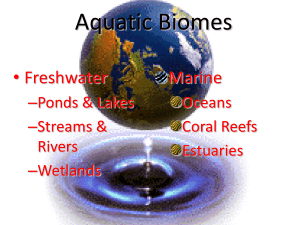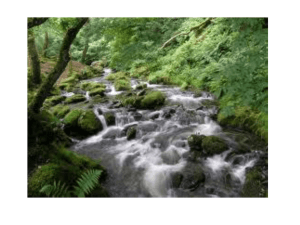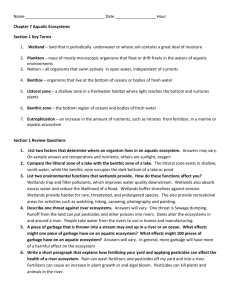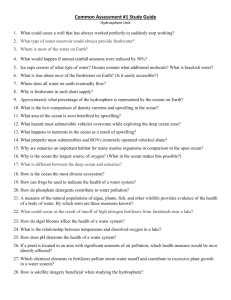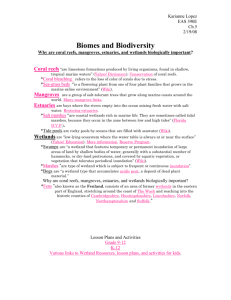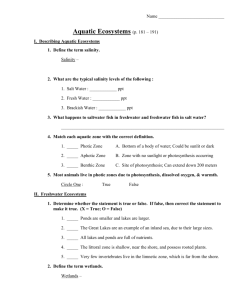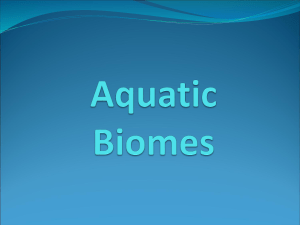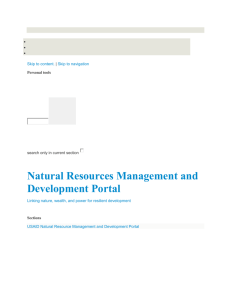Aquatic Ecosystems Lecture Notes
advertisement
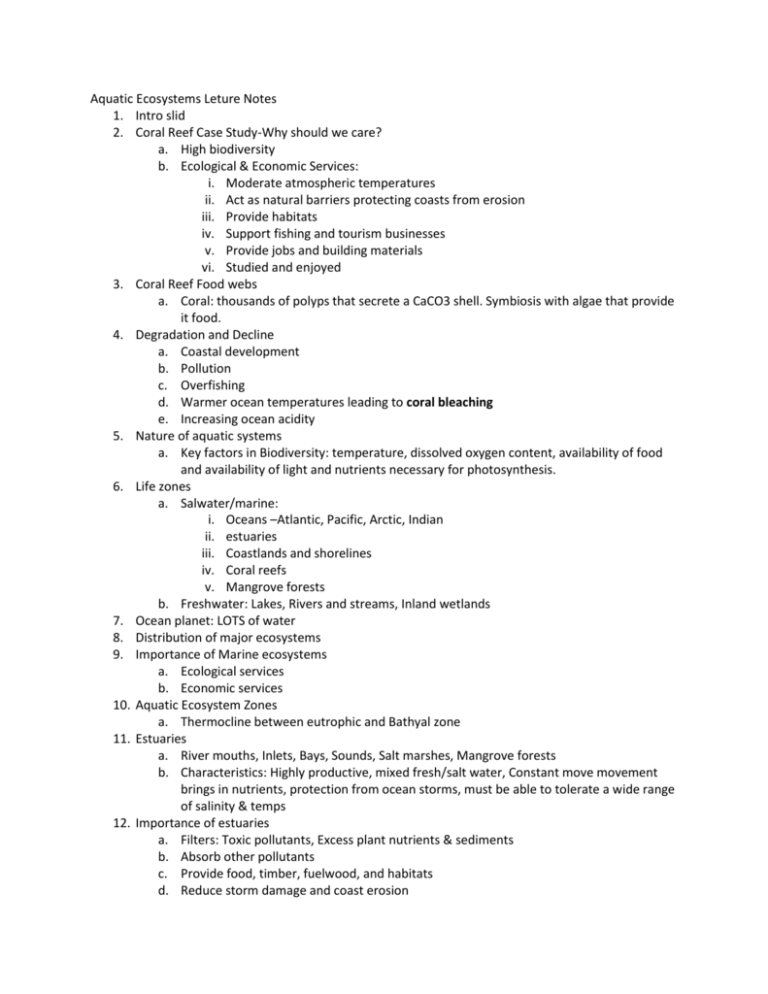
Aquatic Ecosystems Leture Notes 1. Intro slid 2. Coral Reef Case Study-Why should we care? a. High biodiversity b. Ecological & Economic Services: i. Moderate atmospheric temperatures ii. Act as natural barriers protecting coasts from erosion iii. Provide habitats iv. Support fishing and tourism businesses v. Provide jobs and building materials vi. Studied and enjoyed 3. Coral Reef Food webs a. Coral: thousands of polyps that secrete a CaCO3 shell. Symbiosis with algae that provide it food. 4. Degradation and Decline a. Coastal development b. Pollution c. Overfishing d. Warmer ocean temperatures leading to coral bleaching e. Increasing ocean acidity 5. Nature of aquatic systems a. Key factors in Biodiversity: temperature, dissolved oxygen content, availability of food and availability of light and nutrients necessary for photosynthesis. 6. Life zones a. Salwater/marine: i. Oceans –Atlantic, Pacific, Arctic, Indian ii. estuaries iii. Coastlands and shorelines iv. Coral reefs v. Mangrove forests b. Freshwater: Lakes, Rivers and streams, Inland wetlands 7. Ocean planet: LOTS of water 8. Distribution of major ecosystems 9. Importance of Marine ecosystems a. Ecological services b. Economic services 10. Aquatic Ecosystem Zones a. Thermocline between eutrophic and Bathyal zone 11. Estuaries a. River mouths, Inlets, Bays, Sounds, Salt marshes, Mangrove forests b. Characteristics: Highly productive, mixed fresh/salt water, Constant move movement brings in nutrients, protection from ocean storms, must be able to tolerate a wide range of salinity & temps 12. Importance of estuaries a. Filters: Toxic pollutants, Excess plant nutrients & sediments b. Absorb other pollutants c. Provide food, timber, fuelwood, and habitats d. Reduce storm damage and coast erosion 13. Estuary Ecosystem Food Web 14. Shorelines (intertidal Zone) a. Area between low and high tides i. Can be rocky (tidepools) or sandy b. Organism must be able to avoid be being swept away or crushed by waves. c. Must survive changing levels of salinity, water and exposure d. Importance of sand dunes – first line of defense against ravages of the sea 15. Open Ocean and Sea Floor a. Euphotic zone-brightly lit upper zone, 40% of the world’s photosynthetic activity, nutrient levels low , DO high, predatory fish b. Bathyal zone- dimly lit middle zone, smaller fishes c. Abyssal zone: dark,cold,low DO i. receives marine snow – dead and decaying organisms ii. Deposit feeders and Filter feeders d. Upwellings e. Primary productivity and NPP /unit area low, but the seas cover so much of the earth’s surface ,it is the largest contributor to earth’s overall NPP 16. Major Threats: a. Coastal development, Overfishing, Runoff of nonpoint source pollution, Point source pollution, Habitat destruction, Introduction of invasive species, Climate change from human activities,Pollution of coastal wetlands and estuaries, SUNSCREEN 17. Types of Freshwater Systems a. Standing (lentic) bodies of freshwater: Lakes-vary in size , depth ,nutrient content, Ponds, Inland wetlands b. Flowing (lotic) systems of freshwater: Streams, Rivers 18. Lakes a. Littoral zone – near shore, shallow sunlit waters to the depth at which rooted plants stop growing , high biodiversity b. Limnetic zone- open, sunlit surface away from shore, sunlight extends to the depth , main source of photosynthesis, microscopic plankton c. Profundal zone-deep ocean water, very dark, low DO d. Benthic zone – bottom of the lake, decomposers, detritus feeder nourished by dead matter that falls from littoral zone

